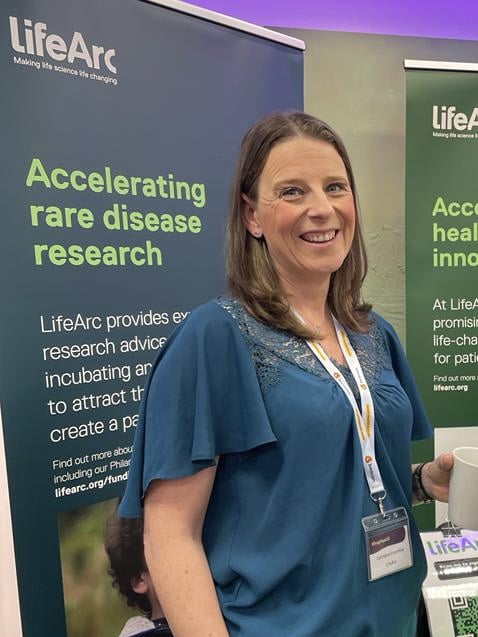Rare conditions, individually, have low patient numbers. However, with more than 7,000 rare diseases identified, collectively there are millions of people living with these conditions across the globe. Despite this, the majority of these conditions have no treatments. This urgently needs to change. But, unfortunately, progress in rare disease research can be slow.
Rare disease researchers face several challenges that prevent their discoveries from progressing, in part due to the rarity of these conditions. Support and advice for translational science projects can help tackle some of these challenges and get new treatments, diagnostics and devices out of the lab and into the next phase of development.
Challenge 1: Funding and investment
The risks and high costs associated with early-stage research can discourage commercial companies from investing. Especially as low patient numbers can mean limited market potential and return on investment.
This is where organisations like LifeArc can step in to bridge the gap and invest in rare disease research. LifeArc investing in early-stage research can help mitigate risks, decrease downstream costs and increase the likelihood of success, which maximises the potential for research to secure additional funding from commercial or industry partners in later stages.
As a self-funded charity, we and other organisations like us, can and should take risks and support projects that others might not.
Challenge 2: Getting fast and accurate diagnoses to patients
There are many challenges when it comes to diagnosing rare diseases. Symptoms of rare diseases can overlap with more common illnesses, complicating diagnosis for healthcare professionals, who may encounter such diseases only once in their careers. Ensuring proven tests are adopted into healthcare settings can be another.
We must find a way to better educate GPs and improve rare disease diagnostic tools so that we are able to detect rare diseases sooner. This is a problem we are working towards addressing in the future.
Challenge 3: Ensuring rare disease treatments get to market and stay there
Advancing research and developing diagnostics and treatments is the first step in addressing this challenge. Ensuring rare disease treatments make it to market and stay there is another.
Many rare disease medications, despite their proven efficacy, are withdrawn from the market due to their lack of profitability. This can be the case with high-cost treatments like gene therapy.
To address this problem, new business models should be explored, such as incentive schemes and reimbursement models, as well as who owns the market authorisation (license) for the treatment, that could make rare disease therapies more attractive from a commercial perspective.
This will ensure that once rare disease treatments are approved, they remain accessible to those in need. We are currently exploring some of these options in our own work.
Challenge 4: Navigating the route to the clinic
Getting a discovery from scientific paper into a real-life treatment or diagnostic is complex. It requires knowledge of processes such as intellectual property management, regulation, manufacturing, and commercialisation – things that many researchers lack experience in.
For example, to get new gene therapies into clinical trials, they need certain standards of manufacture and have rigorous regulatory processes.
This is where organisations like us can come in – to provide the necessary advice and support to get discoveries out of the lab and into the hands of patients.
As an example of how this can work, in 2021, we established 3 Innovation Hubs for Gene Therapy. These hubs were launched in partnership with the Medical Research Council and the Biotechnology and Biological Sciences Research Council. They provide academics with access to Good Manufacturing Practice (GMP)-compliant facilities essential for conducting clinical trials and offer vital translational support and regulatory advice.
We also have the Gene Therapy Innovation Fund which allocates up to £5 million annually to researchers, providing financial support as well as extensive advisory services from our Hubs. Similarly, we have the Philanthropic Fund which offers both funding and guidance on intellectual property and commercialisation for academics working on projects in rare diseases.
Challenge 5: Lack of collaboration and infrastructure
Although the rare disease community already collaborate extensively, more can be done to combine resources that could progress research and overcome challenges.
Funders in the space need to focus on improving infrastructure and encouraging a more joined up approach to rare disease research.
For example, we are creating 4 Translational Centres for Rare Disease. These centres will help foster new collaborative approaches and provide an ideal setting to engage with the patient community to understand their needs better. With the right people working together at the right time, we hope research will advance more quickly, with more innovations are likely to reach the people who need them.
Challenge 6: Lack of data on rare diseases
Often, we know very little about rare conditions including their prevalence, symptoms and diagnosis pathways. It is crucial to collect more comprehensive data so that we can get better at diagnosing and treating rare diseases.
With the advent of electronic patient record systems and artificial intelligence (AI) we should be in a better place than ever to harness data. However, there are still significant challenges when it comes to rare diseases, and this is something we are keen to explore moving forward.
Although the challenges facing rare disease researchers are not an easy fix, we find great optimism in witnessing progress achieved through our funding, guidance, and collaborative efforts. With our help, we aim to get more innovations on the market and ultimately improve the lives of people living with rare diseases.



